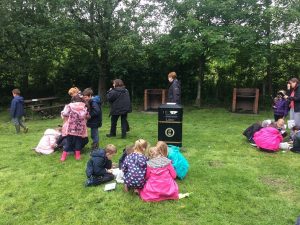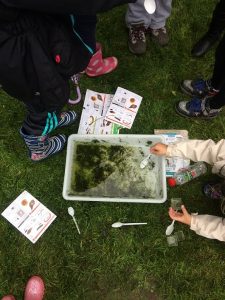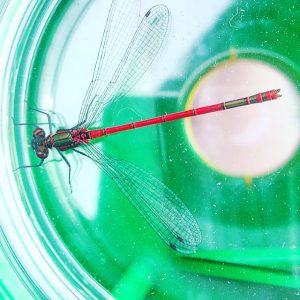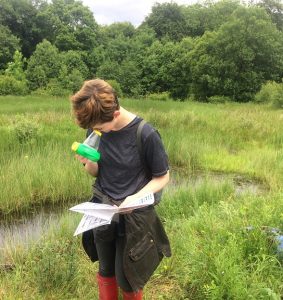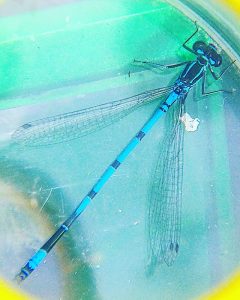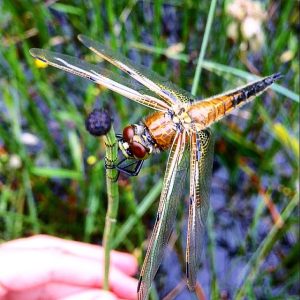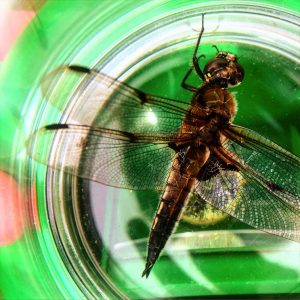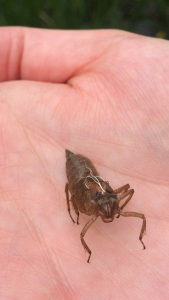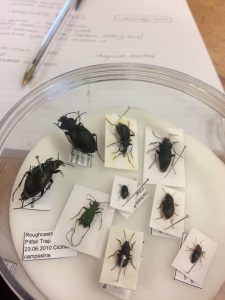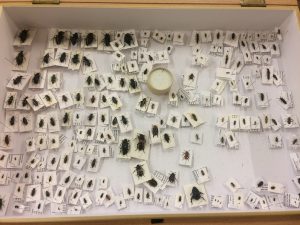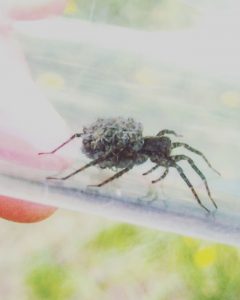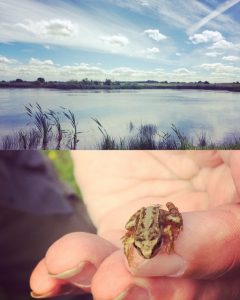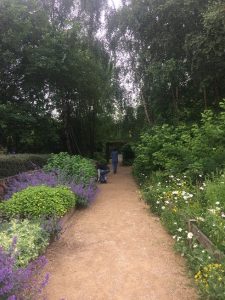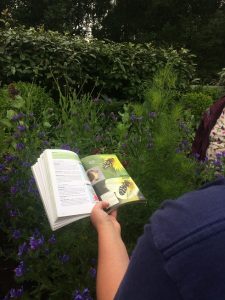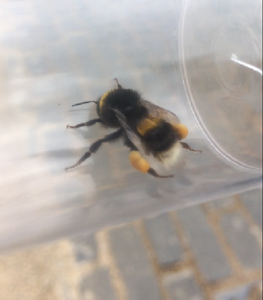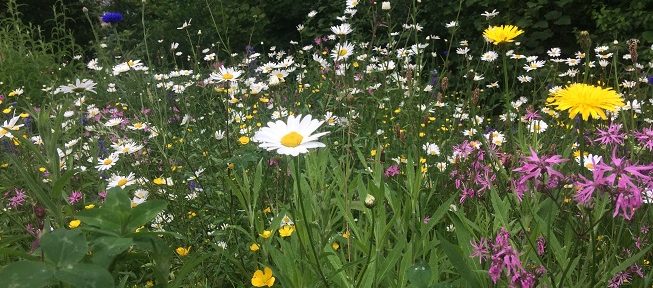
Hello again,
It’s already the second month of my traineeship which signaled the start of the school outreach programme attached to the Marvellous Mud Snails Buglife project. I’ve been on some really fun school visits in the last few weeks, plus the site visits to go out and record the current Mud Snail populations are also in the diary. I’m also hoping to get out and survey some potential sites and look for ideal places to re-locate and release the captive reared snails at the beginning of next year.
I realised that this month also marked the beginning of me noticing that the things I’m learning are sinking in. All the training opportunities – be it one day workshops or residential weekend field courses – have really been helping to improve my knowledge in areas which I previously knew nothing about. Plus it’s been so enjoyable.
In the short space of time from starting at Buglife in April, here’s a little run down of the training I’ve had so far.
Introduction to OPAL surveys one day practical course
One to one session with mollusc expert Adrian Sumner
Outdoor Games and Activities training course
Introduction to Beetles workshop and practical session
Scottish Natural Heritage Invertebrate Hunt
Introduction to Wildflower Identification
Working Outdoors with People with Autism one day training course
TCV Safeguarding Children and Vulnerable Adults one day course
Dragonfly Identification Workshop
Introduction to Invertebrates one day course
4 day Field Studies Council Introduction to Freshwater Invertebrate Course in the Yorkshire Dales
All that in less than three months!
I find I have families of freshwater snails floating around in my head at all times, going to sleep and waking up repeating scientific names for all sorts of things. I’m slowly trying to build my knowledge base, from someone who about 2 and a half years ago only knew the basics, to now honing and developing skills that will hopefully make me an employable human in the field that I’ve grown to love so much.
I’m learning who feeds on what, who eats each other, who carries disease, and how invertebrates interlink with each other. Something so simple as preparing a school lesson plan which touches on what it means to be a predator in the animal world sends my brain into overdrive thinking about the more complex issues. Using a colouring in worksheet about food chains, outside of the classroom has me thinking and planning and preparing.
The Young’uns
After spending part of the previous week preparing my education packs, the middle of June saw me start the first proper education sessions for the Mud Snail project. The primary schools in the five local council areas where the population of snails are found will be looking after a tank each after the summer holidays and learning all about freshwater life.
First I took myself, and a tank of the famous mud snails along to Lennoxtown Primary for an indoor introduction to their new guests and the world of invertebrates in general before heading out to nearby Whitefield Pond by a pond-dipping session using the OPAL Water Survey guide to log our results. We had a great hour before the rain started to come on and found that the school’s local pond is a great green space to use and houses a very healthy pond. Once back in the classroom I used some of the games and activities I’d been preparing to think about what we’d seen and learnt that day.
For the second visit it was off to Gartmorn Dam near Alloa, for an on-site activity with Deerpark Primary who will also be looking after the snails. We discovered that the vast pond was full of exciting underwater life, with a tadpole (sadly not an invertebrate) being the unfortunate star of the show. We saw the food chain in action as diving beetle larvae attempted to attack a caddisfly case leaving its occupant a little bit stressed. There were plenty of freshwater snails, beetles and leeches. We finished off with a wee quiz and drew favourite findings of the day to take home.
Life in a Shell// Snail Diary
‘Four of the best looking among us were chosen to visit some school kids. Apparently they thought we were interesting and they want to look after us in a few months. We continue to lay eggs like our lives depend on it, which they do. Nothing else to report.’
Highlights
Dragon Whisperer:
One of the highlights of this month was the Dragon and Damselfly Workshop I mentioned. Ran through TCV, the British Dragonfly Society came out to Gartcosh Local Nature Reserve to see the emerging adults. It was a perfect spot with lots of varying pond habitats. I was keen to learn the difference between the seeming all blue small damselflies and can happily say I can now do so (all to do with a Honda logo…).
It was a beautiful sunny day, surrounded by swooping martens and kestrels hovering overhead we saw a huge variety of life and even managed to find an exuvia (the outer shell of the larva which Is left behind as the adult emerges). It was clinging still to a reed stalk, with the glossy new Four-Spotted Chaser (Libellula quadrimaculata) adult who was drying out on the top of the vegetation. The photo below shows just how beautiful these creatures are.
Beetlejuice:
I was lucky enough to visit a great, relatively new RSPB site at Black Devon Wetlands in Alloa. As the practical side to another great field course, Introduction to Coleoptera (Beetles), we took a wander through the open spaces, marsh and pond area. It was a brilliantly warm summer’s day and I was feeling lucky to get to work outdoors so much of the week.
There was a lot to take in, with Beetles being a huge group of animals, but each has their own defining characteristics and we managed to make some great finds out in the field, mainly ground beetles and beautifully coloured shining leaf beetles. I have to mention this female adult Wolf Spider carrying all her young on her back. The fuzzy grey spots, they are all teeny little spiders! Look out for them at this time of year being carried around by the female, I’ve spotted quite a few recently.
Plus in the newly created small ponds there were plenty of frogs making full use of the area, and a tonne of freshwater creatures I was keen to take a look at. I’m excited as the site will be used for a Family Fun Day and BioBlitz event that I’m organising for next month Watch this space!
Hidden at Home:
I was happy to be on home turf with a visit to The Hidden Gardens in Glasgow. I went along with my Buglife colleague to be a part of a pollinator workshop session she was running. The place was absolutely perfect for bees, wasps and hoverflies, pollinator heaven! A group of volunteers who already help out at the Gardens were keen to get a better understanding of their space and how they could make it more bee (and bug) friendly. Some follow-up visits have been arranged and I’m hoping to get back over at some point to record the results of some pitfall traps with Glasgow Natural History Society and continue to record the pollinators we find in there.
Some exciting discoveries were made as new records for Glasgow were logged. A female Patchwork leafcutter bee (Megachile centuncularis) was spotted in one of the beds, very noticeable as it has an extremely furry underside. This was only the second time it had ever been recorded in Glasgow, with the last being 1962. The fork-tailed flower bee (Anthophora furcata) was also recorded, and at the time had never been spotted in Glasgow. The site is brilliant for the biodiversity of the City and I’d encourage people to go along for a visit if they’ve never been.
A Day Well Spent:
The final high point of the month was definitely the wonderful TCV training day delivered by Scottish Autism. The ethos of The Conservation Volunteers is to encourage everyone regardless of age or ability to participate and engage with the outdoors. Scottish Autism already work with a few groups holding weekly practical outdoor sessions, on all sorts of things from woodcraft to practical conservation. Part of my traineeship is to contribute to this ongoing effort, to make connections and create opportunities for different community groups. This course –‘Working Outdoors with People with Autism’ so brilliantly explained the benefits and possibly adjustments I could make to hold a successful session. I took away so much from the day, and I feel I would want to run some kind of volunteer day, or activity for a sometimes overlooked set of people in society, that would help them become more involved with all things outdoors and hopefully that would be enjoyable for us all. It’s definitely something I’m thinking about for the future.
Until next time…
-Kirsty
Be sure to follow what I’m up to on Twitter, and check out TCV Natural Talent for an update on my fellow trainees.
Thanks to the Esmée Fairbarin Foundation for funding this brilliant programme. Find out more about them here
Also to Buglife Scotland for hosting my placement. Keep up with all the amazing work they are doing and support the small things!

